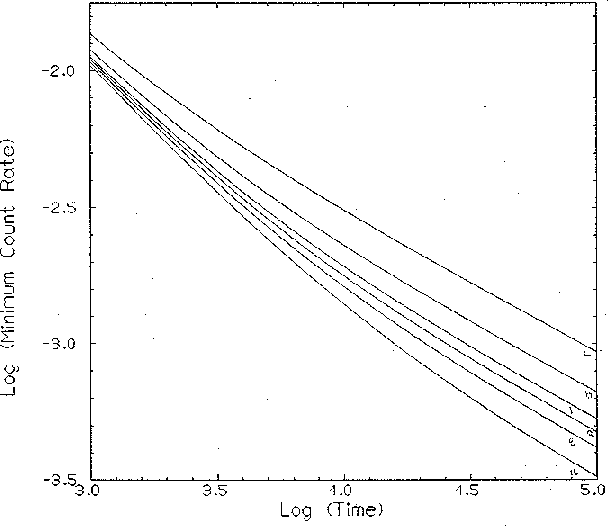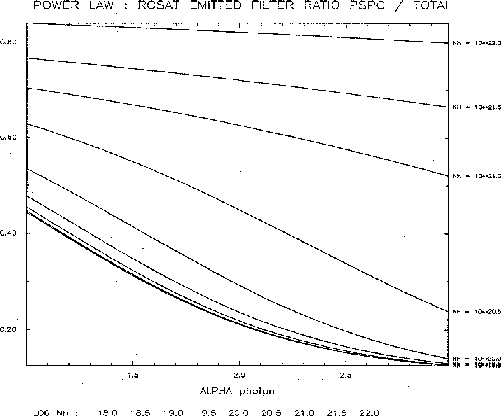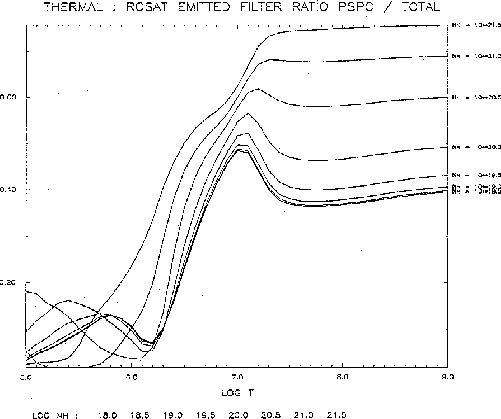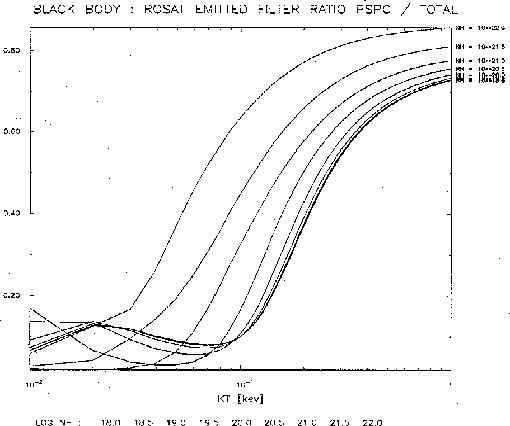



Next: Positional accuracy
Up: FEASIBILITY: XMA+PSPC
Previous: Expected Count Rates
The PSPC offers spectral resolution through event pulse heights
as well as through the use of the boron filter. Because of the
good counter resolution, events occurring in the carbon band can be
separated from those at higher energies without significant pulse height
smearing. Approximately four different colors can be determined
over the whole PSPC band pass. An example of measured PSPC pulse
height spectra is given in Figure 10.14  ;
the upper panel contains the
extremely soft spectrum of a presumed LMXB in the LMC which is detected
only in carbon band; the medium panel shows the pulse height spectrum
of an active nearby star with emission both in the C and M bands; while
the lower panel shows the pulse spectrum of a cut-off source (LMX-1).
;
the upper panel contains the
extremely soft spectrum of a presumed LMXB in the LMC which is detected
only in carbon band; the medium panel shows the pulse height spectrum
of an active nearby star with emission both in the C and M bands; while
the lower panel shows the pulse spectrum of a cut-off source (LMX-1).


The boron filter allows a further subdivision of the carbon band
by comparison of the count rate with and without filter.
This filter transmits most of the photons at higher energies
while absorbing most photons between
0.18 and 0.28 keV. Therefore the filter/open count rate ratio
is sensitive to the spectral intensity between 0.1 and 0.18 keV. For
various values of  we show the filter/open filter ratio
versus photon index for power law spectra (Figure 10.15
we show the filter/open filter ratio
versus photon index for power law spectra (Figure 10.15  ),
the filter/open ratio versus temperature for thermal spectra
(Figure 10.16
),
the filter/open ratio versus temperature for thermal spectra
(Figure 10.16  ), and blackbody spectra
(Figure 10.17
), and blackbody spectra
(Figure 10.17  ). In the case of power law spectra the
boron filter will be useful for column densities below
). In the case of power law spectra the
boron filter will be useful for column densities below  cm
cm  .
For given
.
For given  the ratio of filter/open count rate is sensitive to
the photon index. For thermal spectra the filter/open ratio is very sensitive
to temperature in the temperature range between
the ratio of filter/open count rate is sensitive to
the photon index. For thermal spectra the filter/open ratio is very sensitive
to temperature in the temperature range between  K and
K and  K
while for very high temperatures the filter/open ratio is sensitive to
K
while for very high temperatures the filter/open ratio is sensitive to
 . For blackbody spectra the filter/open ratio is rather sensitive
to
. For blackbody spectra the filter/open ratio is rather sensitive
to  for column densities above
for column densities above  cm
cm  while for
lower column densities the temperature dependence in the range between
0.1 and 0.3 keV is very pronounced.
while for
lower column densities the temperature dependence in the range between
0.1 and 0.3 keV is very pronounced.











Next: Positional accuracy
Up: FEASIBILITY: XMA+PSPC
Previous: Expected Count Rates
Michael Arida
Tue Jun 11 16:18:41 EDT 1996
 ;
the upper panel contains the
extremely soft spectrum of a presumed LMXB in the LMC which is detected
only in carbon band; the medium panel shows the pulse height spectrum
of an active nearby star with emission both in the C and M bands; while
the lower panel shows the pulse spectrum of a cut-off source (LMX-1).
;
the upper panel contains the
extremely soft spectrum of a presumed LMXB in the LMC which is detected
only in carbon band; the medium panel shows the pulse height spectrum
of an active nearby star with emission both in the C and M bands; while
the lower panel shows the pulse spectrum of a cut-off source (LMX-1).







